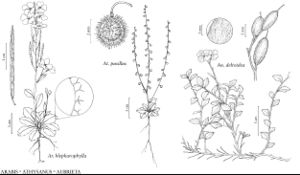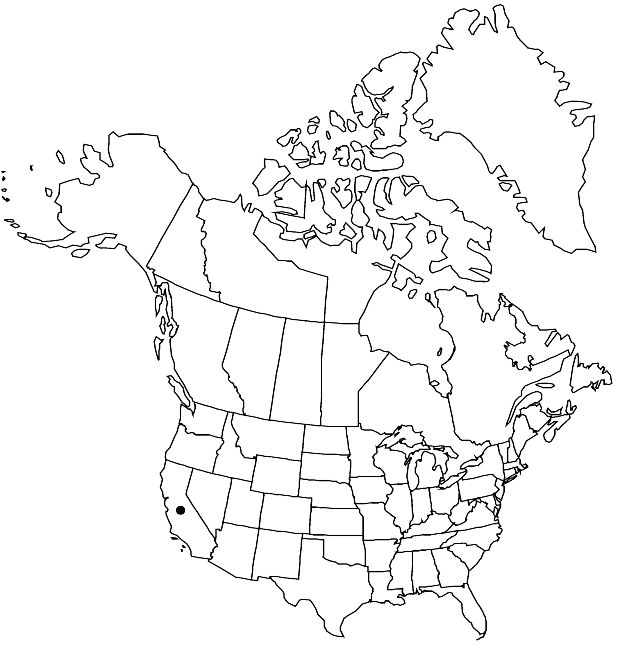Arabis blepharophylla
Bot. Beechey Voy., 321. 1838.
Perennials; (caudex simple or branched, covered with persistent petiolar remains); sparsely to moderately pubescent, trichomes simple, forked-stalked, or rarely cruciform or 3-rayed, stalked, stellate. Stems simple or few from base (caudex), erect, unbranched or branched (few) distally, 0.6–2.5(–3) dm, (usually pubescent throughout, rarely subglabrate). Basal leaves: petiole 0.5–3(–6) cm, (ciliate); blade oblanceolate, spatulate, or obovate, (1.5–)2.1–3.5(–6) cm × (5–)8–20(–25) mm, margins entire or dentate, (ciliate), apex obtuse, surfaces pubescent or glabrous, trichomes simple and forked, sometimes mixed with 3- or 4-rayed stellate ones. Cauline leaves (2 or) 3–6 (or 7); blade oblong or ovate, 1–2(–4) cm × (2–)4–10(–15) mm, base not auriculate, margins entire or dentate, (ciliate), apex obtuse, surfaces pubescent as basal leaves. Racemes simple, (dense). Fruiting pedicels ascending to erect, (3–)5–10(–15) mm. Flowers: sepals (purple), oblong, 5–7 × 1.5–2 mm, lateral pair saccate basally; petals purple, spatulate or broadly so, (12–)14–18 × 4–7 mm, apex obtuse or rounded; filaments 6–8 mm; anthers narrowly oblong, 1.2–1.5 mm. Fruits erect or nearly so, slightly torulose, 2–4 cm × 2–3 mm; valves each with prominent midvein extending full length or rarely to middle; ovules 20–28 per ovary; style 0.2–1(–1.5) mm. Seeds narrowly winged throughout, orbicular or suborbicular, 2–2.5 mm in diam.; wing 0.2–0.4 mm wide (wider distally). 2n = 16.
Phenology: Flowering Mar–Apr.
Habitat: Rocky hillsides and bluffs, grassy hillsides, slopes
Elevation: 50-200 m
Discussion
Arabis blepharophylla is an attractive species on the gradual increase in cultivation as an ornamental. It is recorded from Contra Costa, Marin, San Francisco, San Mateo, Santa Cruz, and Sonoma counties; most of the records are based on older collections.
Selected References
None.

